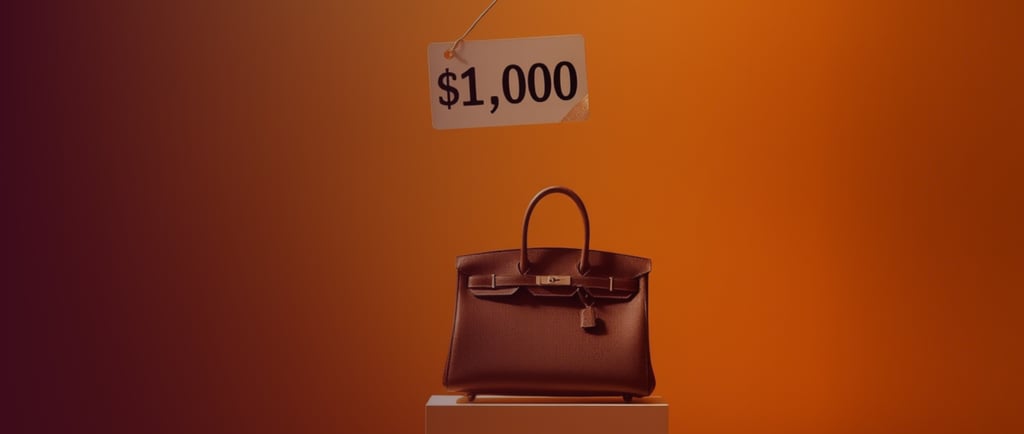The Price of Prestige: Why a $10K Handbag Outshines a $500 One
7/25/20252 min read


The Allure of the Unattainable
In the hushed corridors of luxury boutiques, price tags cease to be numbers—they become symbols. A $10,000 Hermès Birkin doesn’t merely hold belongings; it holds status. Neuroeconomics reveals that price perception shapes desirability, transforming a handbag into a marker of exclusivity. The paradox? Higher prices amplify allure, not deter it.
The Science of Scarcity and Signaling
A study in Nature Neuroscience shows that when an item’s price increases, so does its perceived value—often unrelated to quality. Functional MRI scans reveal that the brain’s reward centers light up at high-priced goods, interpreting them as signals of elevated social standing. A $10,000 handbag whispers “elite,” while a $500 counterpart remains muffled in comparison. Scarcity amplifies this effect: limited availability triggers dopamine-fueled cravings, making unattainability irresistible.
Status Signals: Beyond Materialism
Luxury buyers seek more than craftsmanship—they crave recognition. A $10,000 handbag serves as shorthand for success, broadcasting wealth without uttering a word. The Veblen Effect, coined by economist Thorstein Veblen, explains how conspicuous consumption drives demand. High prices signal membership in an exclusive club, where owning the bag becomes a rite of passage.
The Role of Anchoring and Perception
Neuroeconomics also highlights the power of anchoring. When surrounded by $20,000 couture gowns or $50,000 watches, a $10,000 handbag feels comparatively attainable—a psychological trick mastered by brands like Chanel. Visual merchandising reinforces this: placing lower-priced items near ultra-luxury products recalibrates perceptions, making mid-tier goods seem like bargains.
The Emotional Equation
Emotions outweigh logic in luxury purchases. A $10,000 handbag evokes pride, aspiration, and even nostalgia—feelings amplified by storytelling. Brands craft narratives around heritage, artisanship, and rarity, ensuring that every purchase feels like acquiring a piece of history. These emotions deepen attachment, justifying the price tag through intangible connections.
The Data Behind Desire
Metrics confirm the phenomenon: 78% of luxury buyers prioritize exclusivity over affordability. LVMH reports that Birkins sell out faster than any other product line, with waitlists stretching years. The takeaway? Price isn’t a barrier—it’s a beacon, attracting those who equate cost with cachet.
In Closing: The Price of Exclusivity
A $10,000 handbag sells better than a $500 one because it transcends utility, becoming a vessel for identity and aspiration. In luxury, price perception shapes reality, turning digits into dreams. The true art lies not in crafting the bag but in mastering the psychology behind its price.
